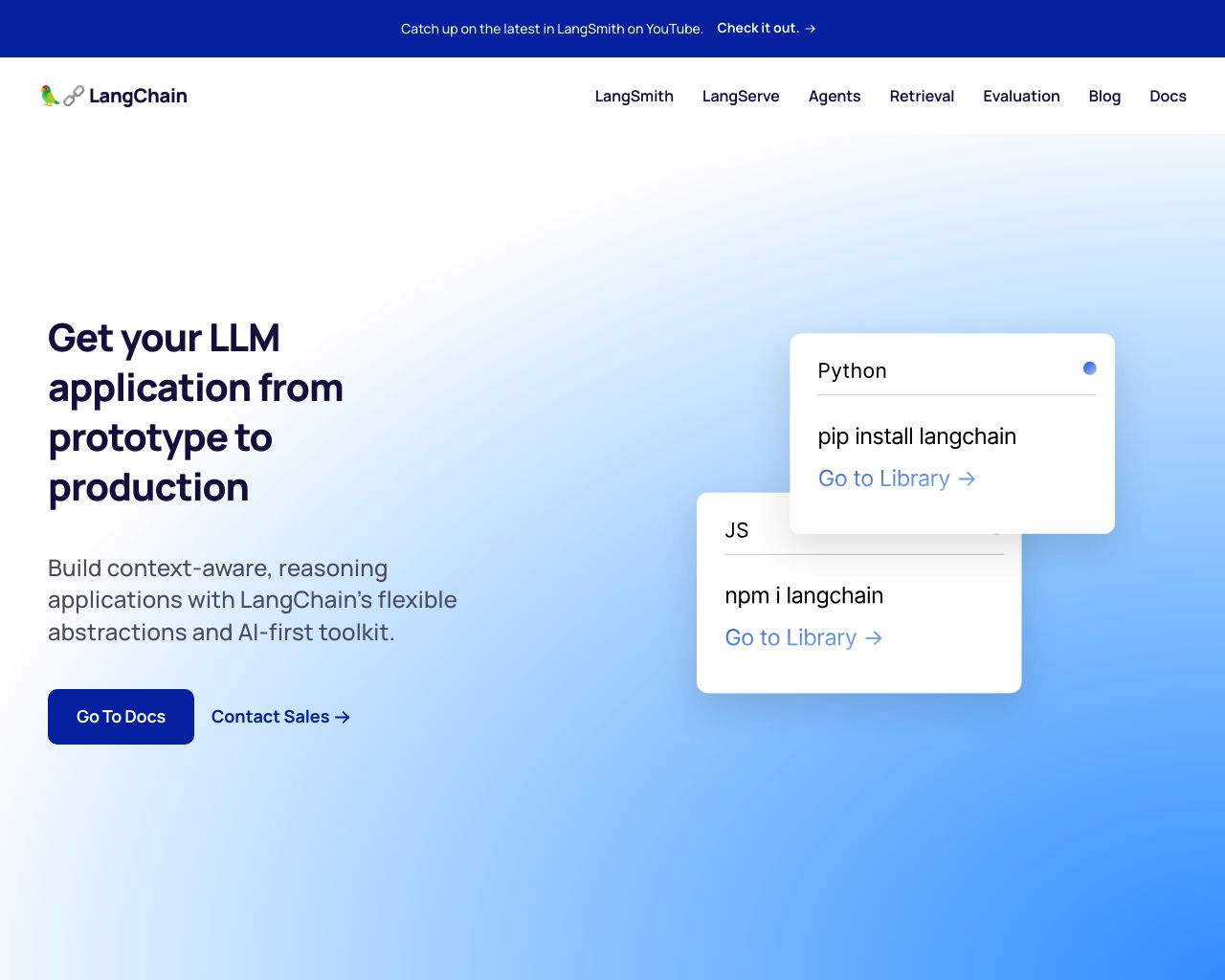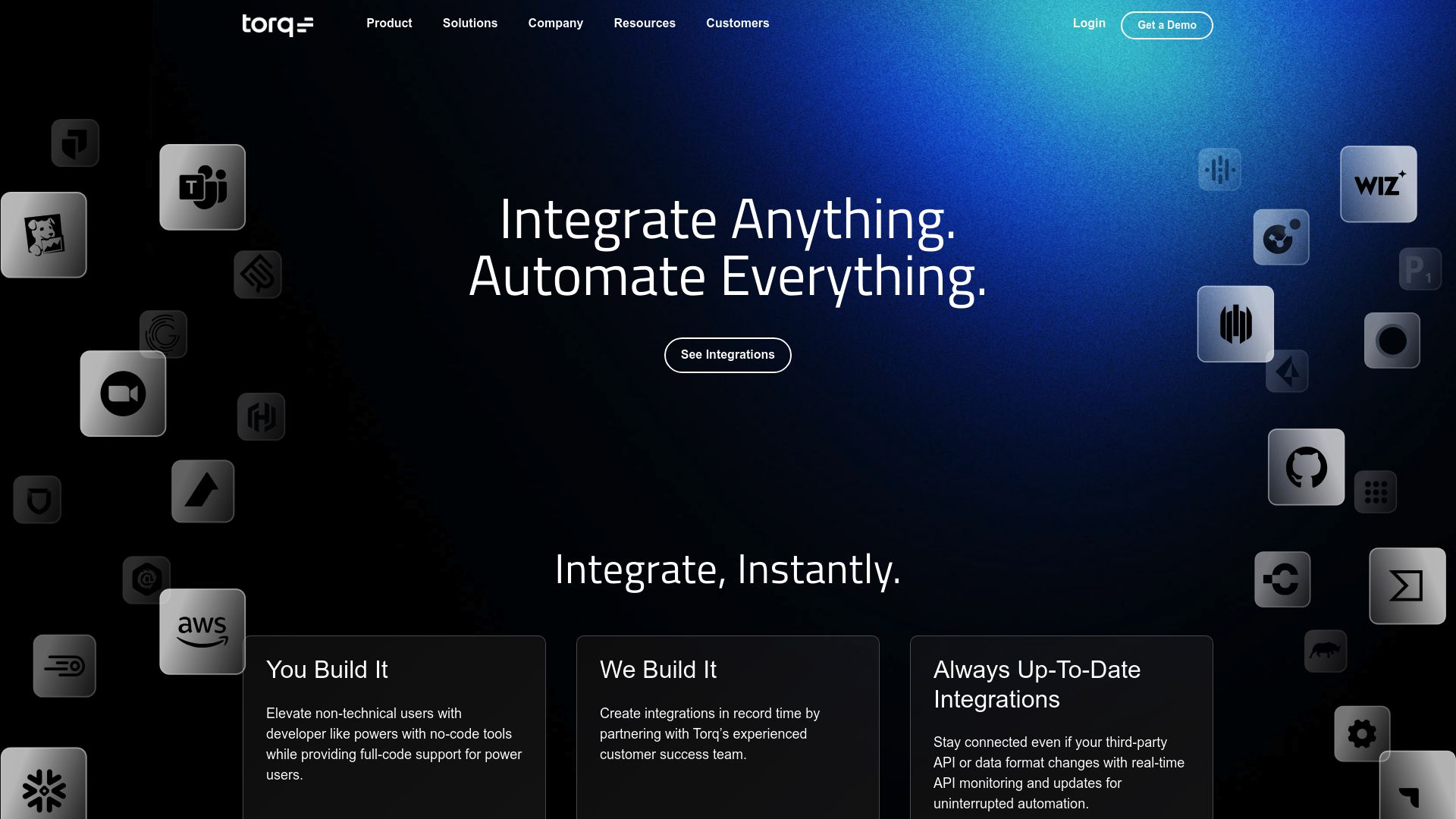LangChain vs. Torq Hyperautomation: AI Automation Showdown
AI-powered automation revolutionizes how businesses operate, streamline processes, and enhance productivity. LangChain vs. Torq Hyperautomation, and SmythOS offer distinct approaches to harnessing AI’s potential. This comparison examines their key features, strengths, and limitations to help you choose the best solution for your needs.
We’ll explore LangChain’s flexible framework for language model applications, Torq Hyperautomation’s focus on enterprise-grade security operations, and SmythOS’s comprehensive platform that combines versatility with accessibility. Whether you’re a developer seeking powerful AI tools, a business leader looking to automate security processes, or a non-technical user aiming to leverage AI without coding expertise, this analysis will guide you through the capabilities of each platform and highlight how SmythOS stands out as the superior choice for diverse AI automation requirements.
LangChain Overview
LangChain empowers developers to build sophisticated applications powered by large language models (LLMs). This open-source framework simplifies the creation, deployment, and management of AI agents through a comprehensive suite of tools and libraries.
At its core, LangChain offers modular components for constructing LLM-driven applications. These include prompt templates, memory systems, and data loaders that streamline the development process. LangChain’s Expression Language (LCEL) provides a declarative way to chain these components, enabling features like streaming support and optimized parallel execution.
LangChain empowers developers to build sophisticated applications powered by large language models (LLMs). This open-source framework simplifies the creation, deployment, and management of AI agents…
LangChain extends its capabilities beyond development with LangSmith, a powerful tool for debugging, testing, and monitoring LLM applications. This ensures robust performance and facilitates continuous improvement. For deployment, LangServe transforms LangChain chains into production-ready REST APIs, simplifying the transition from development to live environments.


LangChain’s strength lies in its flexibility and integration capabilities. It supports various LLMs, including OpenAI and Anthropic models, and offers tools for multimodal inputs. The framework also facilitates advanced techniques like retrieval augmented generation (RAG) to enhance response accuracy.
While LangChain provides a robust ecosystem for LLM application development, it requires a degree of technical proficiency. The platform caters primarily to developers and data scientists, potentially limiting accessibility for non-technical users. Additionally, as an open-source project, some users may find the documentation and support less comprehensive compared to commercial alternatives.
LangChain positions itself as a versatile toolkit in the AI development landscape. Its modular approach and extensive features make it a compelling choice for teams looking to build sophisticated LLM applications, particularly those requiring customization and integration with existing systems.
Torq Hyperautomation Overview
Torq Hyperautomation offers an AI-driven platform designed for enterprise-grade security operations. The software connects the entire security infrastructure stack, enabling autonomous security operations and allowing organizations to remediate security events and orchestrate complex processes at scale.
Torq’s platform features customizable workflows that automate security tasks, freeing up security professionals for strategic activities. These workflows are triggered by events from third-party services, user actions, internal system events, or scheduled times. The platform’s modular building blocks, called steps, automate specific actions and support API-based functions and scripting.
Torq’s platform features customizable workflows that automate security tasks, freeing up security professionals for strategic activities.


The platform includes extensive built-in integrations with third-party services, facilitating easy connections during workflow execution. Torq also provides automated case management for handling security events from creation to resolution. The workspace feature allows for resource grouping with role-based access control, streamlining collaboration and resource sharing.
While Torq excels in security automation, it lacks some features common in general-purpose AI agent builders. The platform does not offer a visual builder or no-code editor, which may limit accessibility for non-technical users. Additionally, there’s no mention of multimodal capabilities or support for foundation AI models beyond security-specific applications.
Torq Hyperautomation positions itself as a specialized solution for cybersecurity teams and organizations prioritizing autonomous security operations. Its focus on security-specific workflows and integrations sets it apart in the competitive landscape, but may also limit its applicability outside the cybersecurity domain.
Feature Comparison
LangChain and Torq Hyperautomation offer distinct approaches to AI-powered automation, with key differences in their core components and security features. LangChain provides a flexible framework for building language model applications, emphasizing customization and integration with various AI models. Its LangGraph component enables the creation of stateful, multi-actor applications, while LangSmith offers robust debugging and monitoring tools. In contrast, Torq Hyperautomation focuses on enterprise-grade security operations, with customizable workflows designed to automate security tasks and processes.
LangChain’s strength lies in its extensive AI capabilities and developer-friendly tools. It supports various foundation models, including OpenAI and Anthropic, and integrates with Hugging Face for additional AI functionalities. The platform offers memory modules for context retention and autonomous agent capabilities through LangGraph. However, LangChain lacks some enterprise-oriented features like built-in data encryption or IP control.
Torq Hyperautomation excels in security-focused automation, offering features like automated case management and extensive integrations with third-party security services. While it provides robust workflow automation capabilities, Torq does not offer the same level of AI model flexibility or developer tools as LangChain. The platform’s emphasis on security operations may limit its applicability in general-purpose AI development scenarios compared to LangChain’s more versatile approach.
Feature Comparison Table
| LangChain | Torq Hyperautomation | SmythOS | |
|---|---|---|---|
| CORE FEATURES | |||
| Visual Builder | ❌ | ✅ | ✅ |
| No-Code Options | ❌ | ✅ | ✅ |
| Explainability & Transparency | ✅ | ❌ | ✅ |
| Problem-Solving Capabilities | ✅ | ❌ | ✅ |
| Human-AI Interaction | ✅ | ❌ | ✅ |
| Agent Work Scheduler | ❌ | ✅ | ✅ |
| SECURITY | |||
| Constrained Alignment | ❌ | ✅ | ✅ |
| IP Control | ❌ | ✅ | ✅ |
| COMPONENTS | |||
| Huggingface AIs | ✅ | ❌ | ✅ |
| Zapier APIs | ❌ | ❌ | ✅ |
| All other APIs, RPA | ✅ | ❌ | ✅ |
| Logic | ✅ | ❌ | ✅ |
| Data Lakes | ❌ | ✅ | ✅ |
| DEPLOYMENT OPTIONS (EMBODIMENTS) | |||
| Deploy as API | ✅ | ❌ | ✅ |
| Deploy as Webhook | ❌ | ✅ | ✅ |
| Staging Domains | ❌ | ✅ | ✅ |
| Production Domains | ❌ | ❌ | ✅ |
| API Authentication (OAuth + Key) | ✅ | ❌ | ✅ |
| Deploy as Scheduled Agent | ❌ | ❌ | ✅ |
| Scalability | ✅ | ❌ | ✅ |
| DATA LAKE SUPPORT | |||
| Hosted Vector Database | ❌ | ✅ | ✅ |
| Sitemap Crawler | ❌ | ❌ | ✅ |
| YouTube Transcript Crawler | ❌ | ❌ | ✅ |
| URL Crawler | ❌ | ❌ | ✅ |
| PDF Support | ✅ | ❌ | ✅ |
| Word File Support | ❌ | ✅ | ✅ |
Best Alternative to LangChain and Torq Hyperautomation
SmythOS emerges as the superior alternative to LangChain and Torq Hyperautomation, offering a comprehensive platform for AI agent development and deployment. We combine the flexibility of LangChain’s AI capabilities with the security focus of Torq Hyperautomation, while adding powerful features that set us apart.
Our drag-and-drop interface makes agent creation accessible to users of all skill levels, eliminating the steep learning curve associated with LangChain’s code-heavy approach.
Our drag-and-drop interface makes agent creation accessible to users of all skill levels, eliminating the steep learning curve associated with LangChain’s code-heavy approach. Unlike Torq’s narrow focus on security operations, SmythOS supports unlimited use cases across industries, from customer service to data analysis.
SmythOS excels in areas where LangChain and Torq fall short. We offer robust explainability and transparency features, critical for understanding AI decision-making processes. Our platform includes advanced problem-solving capabilities and seamless human-AI interaction, enabling more sophisticated and user-friendly applications than either competitor.
Unlike LangChain’s limited deployment options, SmythOS provides versatile embodiments including APIs, webhooks, scheduled agents, and site chat integrations. We also offer staging and production domains, ensuring smooth development and deployment workflows that Torq lacks.
With SmythOS, users gain access to a hosted vector database, extensive data lake support, and powerful web crawling capabilities—features absent in both LangChain and Torq.
With SmythOS, users gain access to a hosted vector database, extensive data lake support, and powerful web crawling capabilities—features absent in both LangChain and Torq. These tools empower users to handle large-scale data processing and create truly intelligent agents. By choosing SmythOS, developers and businesses unlock the full potential of AI automation, backed by a platform designed for innovation, scalability, and ease of use.
Conclusion
LangChain and Torq Hyperautomation offer powerful solutions for AI-driven automation, each with unique strengths. LangChain excels in flexible LLM application development, providing robust tools for developers to create sophisticated AI agents. Torq Hyperautomation shines in security-focused automation, offering enterprise-grade solutions for cybersecurity teams.
However, SmythOS emerges as the superior choice, combining the best of both worlds with additional advantages. Our platform offers unparalleled versatility, supporting over 300,000 integrations and a wide range of AI models. SmythOS’s intuitive drag-and-drop interface democratizes AI development, making it accessible to both technical and non-technical users.
Unlike LangChain, which requires significant coding expertise, or Torq Hyperautomation, which focuses primarily on security, SmythOS provides a comprehensive solution for diverse business needs. Our platform enables the creation of multimodal agents, supports advanced problem-solving capabilities, and offers seamless deployment options across various environments.
We invite you to experience the power of SmythOS firsthand. Explore our diverse range of AI-powered agent templates to jumpstart your projects, or create a free account to build and test unlimited AI agents with no time limit. Discover how SmythOS can revolutionize your workflow and unlock new possibilities in AI automation. Deploy AI agents anywhere and transform your business today with SmythOS.
Last updated:
Disclaimer: The information presented in this article is for general informational purposes only and is provided as is. While we strive to keep the content up-to-date and accurate, we make no representations or warranties of any kind, express or implied, about the completeness, accuracy, reliability, suitability, or availability of the information contained in this article.
Any reliance you place on such information is strictly at your own risk. We reserve the right to make additions, deletions, or modifications to the contents of this article at any time without prior notice.
In no event will we be liable for any loss or damage including without limitation, indirect or consequential loss or damage, or any loss or damage whatsoever arising from loss of data, profits, or any other loss not specified herein arising out of, or in connection with, the use of this article.
Despite our best efforts, this article may contain oversights, errors, or omissions. If you notice any inaccuracies or have concerns about the content, please report them through our content feedback form. Your input helps us maintain the quality and reliability of our information.
